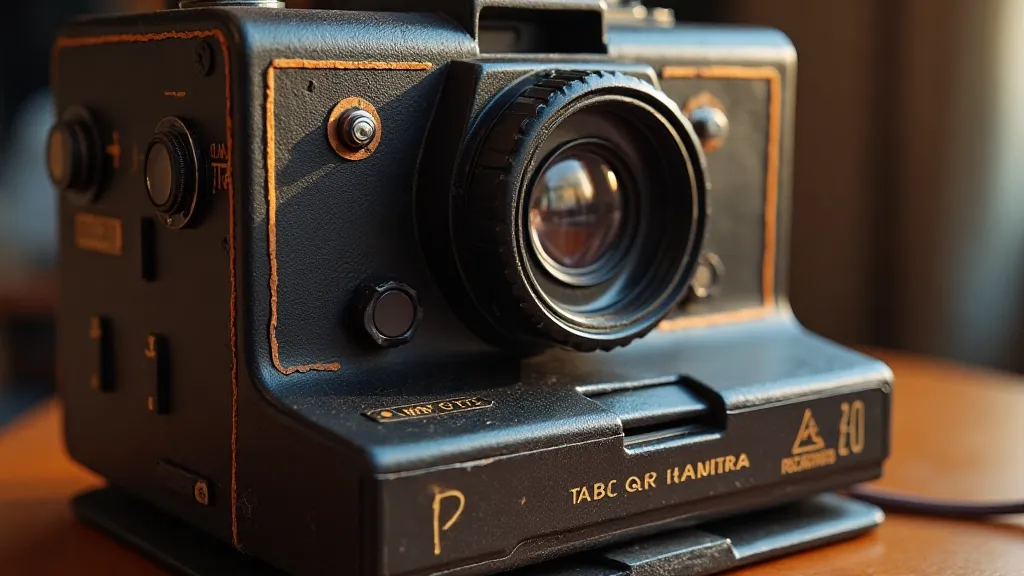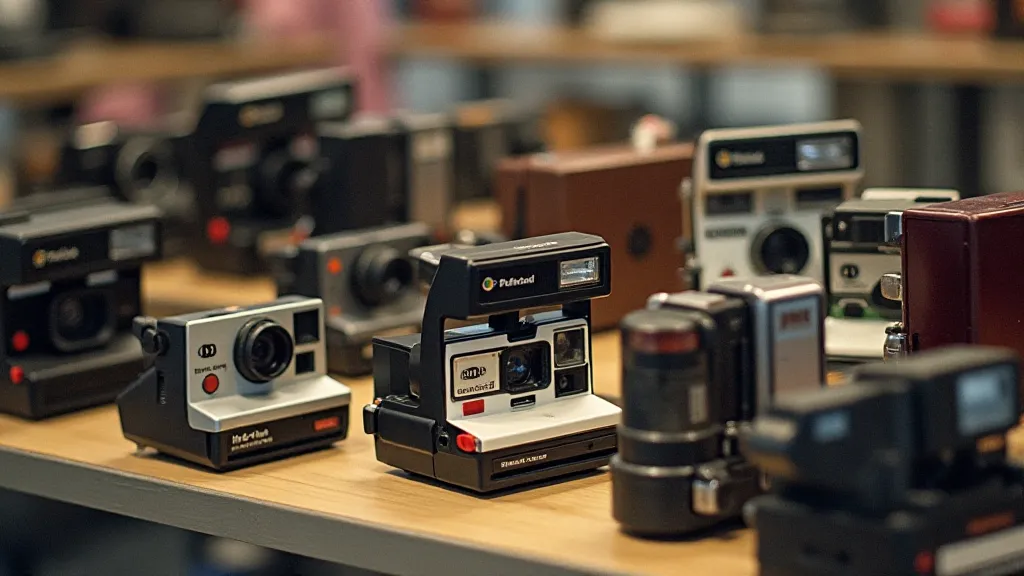Polaroid Cameras: Instant Gratification Through the Years
The name "Polaroid" is almost synonymous with instant photography. Before digital cameras made capturing and sharing images instantaneous, Polaroid offered a magic trick: a photograph developed right before your eyes. But the story of Polaroid is more than just that iconic whirring sound and the satisfying pop of a print emerging. It’s a fascinating journey of innovation, design, and a significant impact on the world of photography.
Edwin Land and the Birth of Instant Photography
The story begins with Edwin Land, a brilliant inventor and entrepreneur. Dissatisfied with the time it took to develop and print photographs, Land sought a better way. He understood that the process of waiting for developed prints was a barrier to instant creativity and sharing. This desire to streamline the photographic process mirrored the broader technological advancements of the era, many of which aimed to simplify and accelerate everyday tasks. In 1948, after years of research and development, the first Polaroid camera, the Polaroid Land Camera Model 40, was released. This marked a revolutionary moment in photography.

The initial process was surprisingly complex. The special film contained multiple layers, and the camera’s mechanics had to perfectly align and press them together, initiating the chemical reactions that produced the image. Early Polaroid prints were also quite different from what we think of today – thicker, with a characteristic ‘sandwich’ appearance. The technical ingenuity required to make this work was astounding; Land and his team essentially built a miniature darkroom within a handheld camera. The innovations weren't limited to the camera itself, but extended to the film chemistry and manufacturing processes, a holistic approach to creating a truly novel photographic experience.
Evolution of the Polaroid System
The following decades saw continual advancements in Polaroid technology. Different film formats were introduced, catering to different needs and price points. The iconic SX-70 camera, released in 1972, was a pivotal moment. It was the first truly foldable Polaroid camera, and its automatic exposure system made it significantly easier to use. The SX-70 also popularized the square format Polaroid image we've come to know. The desire to simplify photography continued to drive innovation, and the SX-70 was a direct response to consumer demand for a more user-friendly instant camera.
Beyond the cameras themselves, Polaroid also innovated with instant films. The “Polacolor” film introduced color instant photography, though early color prints were often prone to color shifts and fading. Subsequent films offered improved color reproduction and print quality. The company constantly strived to improve the quality of the images produced, addressing early limitations and pushing the boundaries of what was possible with instant film technology. This focus on image quality extended to the engineering and design of the cameras themselves; each generation built upon the lessons learned from its predecessors.
The advancement of instant photography didn't occur in a vacuum. It was part of a larger landscape of photographic innovation, and related technologies like the Graflex camera, which played a vital role in wartime documentation, demonstrated the continued desire for portable and reliable photographic tools.
The Decline and Rebirth
Despite its enduring popularity, Polaroid faced significant challenges in the early 2000s. The rise of digital photography dealt a devastating blow, as consumers found the convenience and cost-effectiveness of digital cameras hard to ignore. In 2001, Polaroid Corporation filed for bankruptcy.
However, the spirit of Polaroid didn’t die. The Impossible Project (now Polaroid Originals), a group of dedicated individuals, took on the monumental task of reviving Polaroid instant film production. Through ingenuity and persistence, they managed to create new instant film that could be used in classic Polaroid cameras. The challenge of recreating the complex chemistry and manufacturing processes was immense, a testament to the technical skill and dedication of the Impossible Project team.

Today, Polaroid continues to produce both classic and new instant cameras, appealing to a new generation of photographers and those nostalgic for the unique charm of instant photography. The company’s renewed focus on analog photography, fueled by a desire for tangible experiences and a rejection of the hyper-digital world, shows that instant photography has a lasting appeal. This resurgence is a reflection of a broader trend – a renewed appreciation for the tactile and imperfect nature of analog processes in a world saturated with digital perfection. The ability to hold a physical print, imperfections and all, offers a unique and irreplaceable experience that digital photography simply cannot replicate.
Collecting Polaroid Cameras
For camera collectors, Polaroid cameras represent a significant chapter in photography history. Certain models, particularly those in excellent condition and with original packaging, can command high prices. Popular collecting areas include:
- Early Land Cameras: The Model 40 and subsequent early models are prized for their historical significance.
- SX-70 Cameras: Their compact design and automatic features make them highly desirable.
- Special Edition Cameras: Limited edition or artist-designed models often fetch premium prices.
- Original Packaging & Accessories: Preserving the original box, manuals, and film packs significantly increases a camera's value.
- Stereo Models: While not strictly Polaroid, the principles behind capturing depth and dimension influenced Polaroid's innovations. The early experiments with stereo cameras demonstrated an interest in providing a more immersive photographic experience.

A Lasting Legacy
Polaroid cameras are more than just cameras; they're symbols of creativity, spontaneity, and the magic of instant gratification. Their enduring appeal speaks to a desire for tangible connections and a love for the beauty of imperfection – qualities that are increasingly valued in our digital age. They remain a beloved piece of photographic history, offering a unique and irreplaceable experience for photographers of all levels. The legacy of Edwin Land extends far beyond the invention of instant photography; it encompasses a relentless pursuit of innovation, a commitment to user-friendly design, and a deep understanding of the power of photography to connect people and capture moments in time. The whirring sound, the developing image, the shared memory – these are the hallmarks of a truly iconic technology, one that continues to inspire and delight generations of photographers.
The impact of Polaroid extends beyond just consumer photography. The principles behind instant photography influenced other areas of imaging technology, and the company's commitment to innovation fostered a culture of creativity and problem-solving that continues to resonate today. While the digital age has undoubtedly transformed the way we capture and share images, the spirit of Polaroid – the desire for instant gratification, tangible memories, and a touch of magic – remains as relevant as ever.





